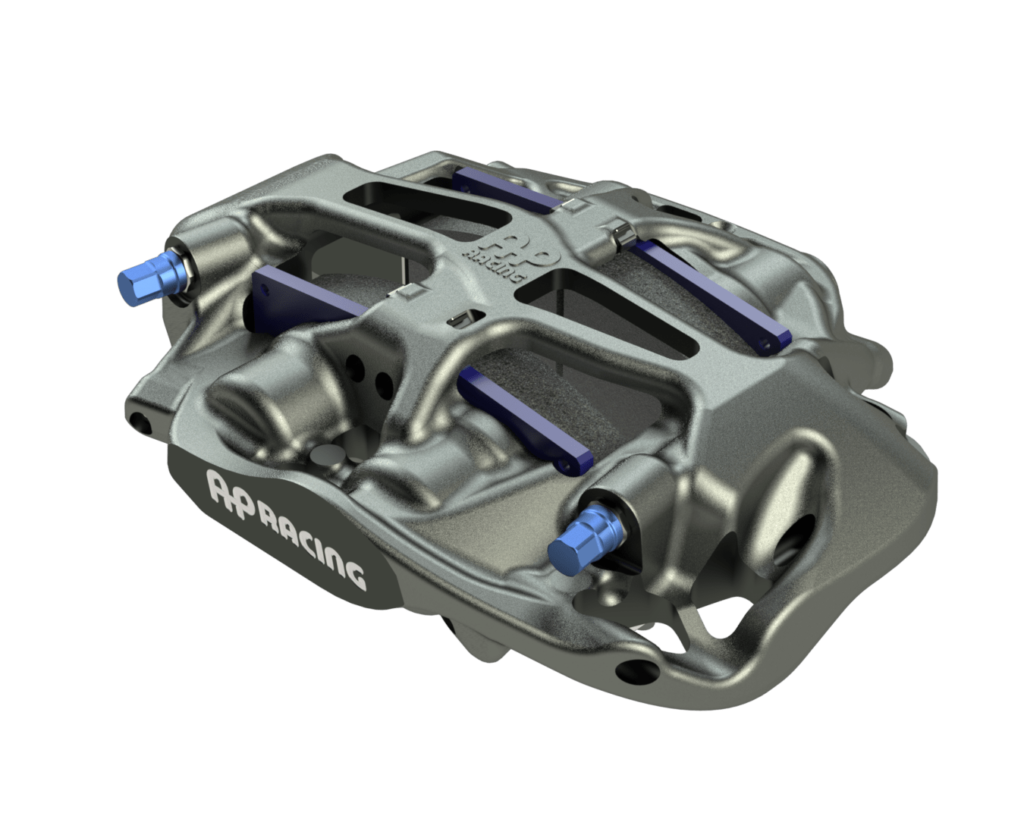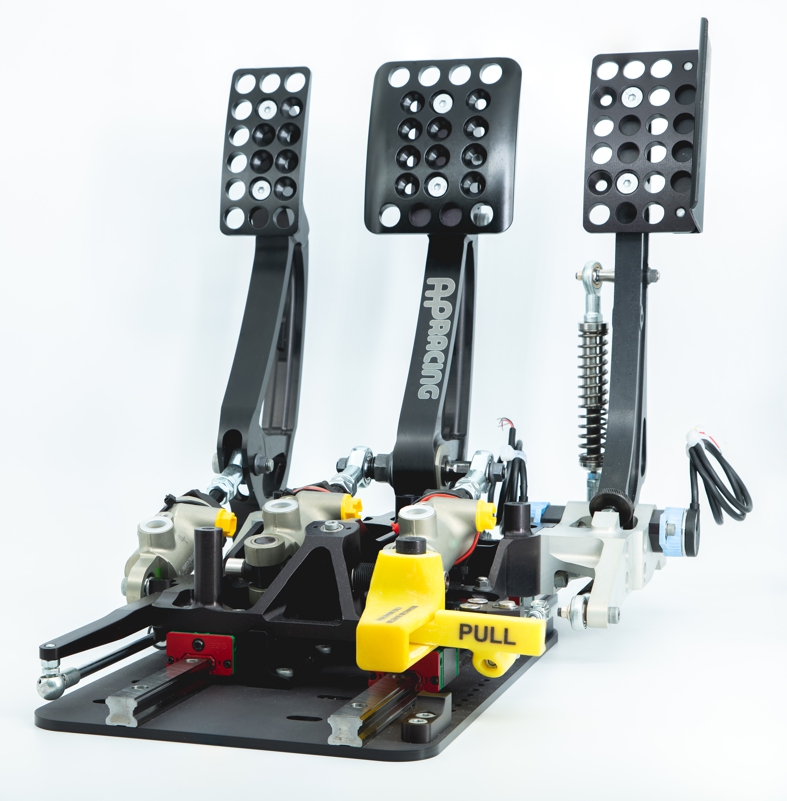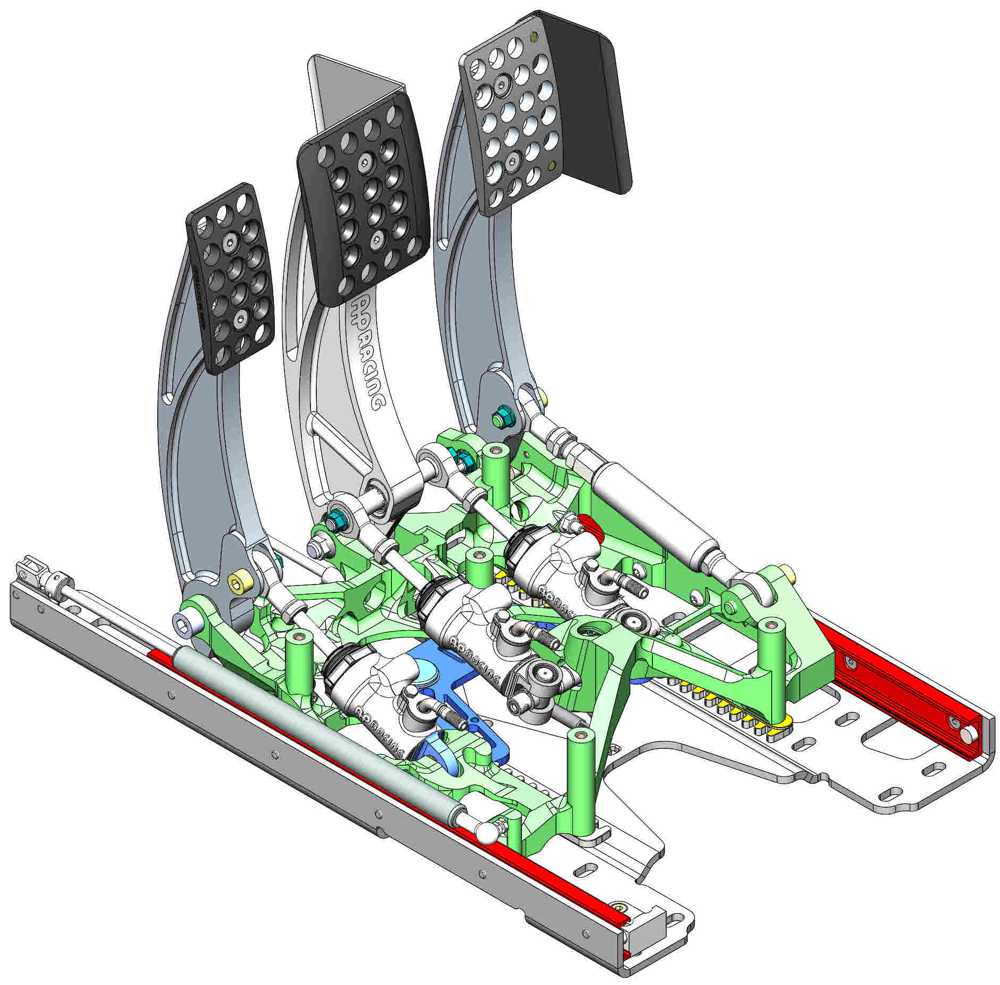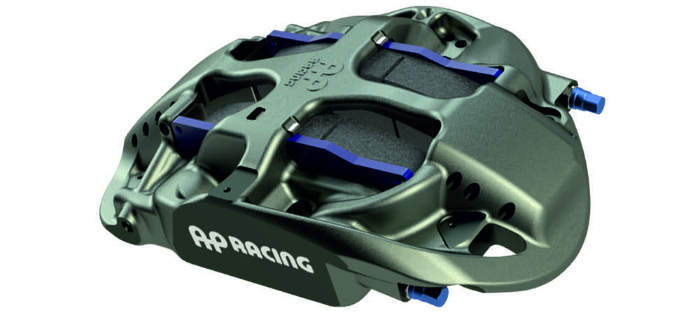The most populous global racing class is GT3, with dozens of manufacturers producing customer cars, raced by both professionals and gentleman drivers alike. The category has ballooned over the past decade and the technology deployed has advanced at a considerable rate. Gone are the days when a GT3 car bore any resemblance to its roadgoing base; current machines are bespoke in almost every way.
This observation applies to the braking system as much as any component group. PMW caught up with AP Racing’s business development manager, Ian Nash, and Paul Hayden, a technical support engineer at the company, to find out how brake technology has evolved to meet the changing demands of GT racing’s second tier.
Commenting on the shift in engineering ethos, Nash observes, “I think the first car I got involved with in GT3 was the Nissan GTR [c.2013]. And I remember that having standard rear brakes on it. I think it also had the standard front uprights and we just upgraded the front calipers. Things have developed a long way since then. Nearly all of the cars now have bespoke uprights and there is no OEM running gear. Then you have things like changes to the FIA regulations in areas such as seat position and adjustment.”
This latter point drove companies such as AP to produce adjustable pedal boxes, to allow for easy accommodation of different drivers. Coupled with adjustable reach steering wheels, most drivers can be fitted to most cars without the need to move seat mounts. According to Nash, AP is now on its second generation of adjustable pedal box, having been first to market with a design when the rules first changed. The latest offering incorporates feedback from users and a modular design, giving greater flexibility of pedal layout.
Hard stopping
One particularly challenging aspect of GT racing for brake manufacturers is the widespread use of ABS. “It’s very nice for gentlemen drivers and for non-professional drivers, but very hard on the brakes,” remarks Nash. “The drivers are just taught to just stand on the brakes as hard as they possibly can. Therefore, it is maximum braking effort on every stop. It’s also hard on the master cylinders, which see very, very high pressures from the ABS system. As a result, we have put a lot of developments into the master cylinders.”
Due to the nature of operation for an ABS system, it is only the master cylinder that sees sustained high-hydraulic pressure, not the caliper. The challenge, explains Nash, is handling the excess braking pressure that the ABS bleeds from the caliper to prevent the wheels locking. “That needs to be removed from the system before the next application. The pressure comes back up the system, and needs to be vented to atmosphere; the only way to do that is through the reservoir, via the master cylinder.”
 On a traditional master cylinder, this process places significant stress on the seals, with Nash noting that in the past, rapid seal wear has been an issue. To counter this, AP has now developed its Centre Valve master cylinders, which are ABS specific and feature a dedicated seal design to ensure reliability.
On a traditional master cylinder, this process places significant stress on the seals, with Nash noting that in the past, rapid seal wear has been an issue. To counter this, AP has now developed its Centre Valve master cylinders, which are ABS specific and feature a dedicated seal design to ensure reliability.
The nature of how GT cars are built amplified some of the early challenges for suppliers such as AP. Constructors tend to buy in components from many sources, and there is not necessarily any direct dealing between companies like Bosch, which supplies the most ABS hardware, and brake manufacturers. Therefore, compatibility issues may not be apparent until cars start track testing. For example, the early evidence of seal problems manifested as an issue with wear particles blocking the hydraulic filters on the ABS units.
Build them tough
GT racing is tightly cost constrained, and as such, the service life of parts tends to be measured in seasons rather than races, while cars are also run by teams with vastly differing levels of experience. As Hayden points out, “The cars are run by professional and non-professional mechanics, so need to be a durable package. The brakes are not something that people want to be tuning. They need to be as close to fit and forget as something on a racecar can be. Things like calipers should be serviced, but I’m sure it is not uncommon for a GT3 caliper to run a season without a service and still cope.”
Ensuring this level of component durability comes down to companies such as AP incorporating design elements developed over years of customer racing experience. Taking its popular GT3 calipers as an example, these are forged, monoblock aluminum productions, with features such as stainless-steel pistons running high temperature seals and substantial pads. If not abused, Hayden explains these are generally low maintenance items: “Our recommendation to teams is to service calipers based on the temperatures they have seen. If a caliper has been running consistently over 200°C, we’d suggest a service. If they are running at 150-170°C, they’re going to be fine and will run for a long time.”
As for brake pads, according to Hayden, most manufacturers will promote a specific pad type with which they will have done most of their testing. “Those tend to be high-bite, high-torque pads which do generate high temperatures. Some of the pads we see nowadays are very consistent at high temperatures, but they can be tricky to bed in. Some drivers do it easily, others not, particularly if they are trying to bed them during practice sessions with other cars on track.” One solution to this issue is pre-bedding pads on a brake dyno, a service AP is finding increasingly popular. Ultimately, using this service can save teams money in the long run. “If you bed the pads incorrectly, you lose life from both the pads and disc and that causes problems,” Hayden points out.

On the subject of discs, GT cars predominantly have to run iron discs by regulation, and these present their own challenges, GT cars are front dominant under braking and discs can see temperatures up to 1,000°C. Again, says Nash, following the correct break in procedure is vital: “With a cast iron disc, there are structural changes going on as the disc gets used. It has to go through a lot of thermal cycling and the life of the disc is dependent on that process being done slowly to thermally condition the disc. If you just race a brand-new disc, you can guarantee you’ll crack it, so to get the life out of a disc, it needs to be brought on in a controlled manner.” Once again, with limited time on track for racers, which could be better spent testing rather than conditioning discs, there is a growing demand for dyno-prepped discs.
Discs have also undergone considerable development, driven both by braking demands and trends in suspension and upright packaging. For example, Nash notes that AP now tends to supply direct drive mounting discs, rather than the traditional bobbin type mounts.
Refinement of the disc design is also ongoing. “In an effort to get more durability from the discs we are always looking for ways to reduce stress to prevent cracking,” says Nash. “We have developed our own thermal shock tests for the discs, putting them through very heavy thermal shocks and high loadings, then cooling them quickly, simulating the worst conditions on track. For example, running down a very long straight to a heavy braking zone.”
As the performance of GT3 continues to increase, and with the class likely set to replace GTE in the near future, companies like AP, as well as those supplying components across the rest of the car, will have to maintain innovation in terms of both performance and cost to remain competitive.




